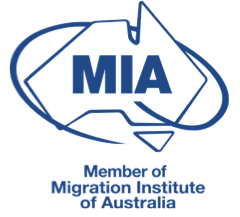There are exciting New Developments in Working Holiday (Subclass 417) and Work & Holiday (Subclass 462) Visas!
- From 5 November 2018 Subclass 417 and Subclass 462 visa holders can stay with the same employer (plant and animal cultivation) for up to 12 months.
- From 5 November 2018 there are additional regional areas where Subclass 462 visa holders can work in plant and animal cultivation, to qualify for their second Work & Holiday Visa.
- From 1 July 2019, there will be an option for both Subclass 417 and Subclass 462 visa holders to obtain a third Working Holiday and Work & Holiday visa.
- The eligible age for subclass 417 visa applicants has been increased to 35 for Irish and Canadian applicants.
- Quotas will increase for Work & Holiday Visa applicants from participating countries (some countries have very low quotas currently).
Today, we will explore the requirements of the Working Holiday Visa, and how to progress to a second and third year Working Holiday Visa.
In a subsequent article, we will explore the requirements of the Work & Holiday Visa, and how to progress to the second and third year within that visa category.
Who is eligible for a Working Holiday visa?
Applicants for Working Holiday Visas and Work & Holiday Visas must hold passports from countries listed in legislative instruments specified by the Minister for Immigration.
Currently the following passport holders are eligible for Working Holiday Visas (Subclass 417):
- Belgium
- Canada
- Denmark
- Finland
- France
- Italy
- Norway
- Sweden
- The Netherlands
- Ireland
- United Kingdom
- Estonia
- Germany
- Japan
- Malta
- Hong Kong
- Cyprus
- South Korea
- Taiwan
Subclass 417 applicants merely need to hold a passport listed above however this is not enough for Subclass 462 visa applicants, who often require further educational qualifications, and in the case of Israel have completed their compulsory military service. This will be discussed in a subsequent article on Work & Holiday Visas. Stay tuned.
How old must I be to apply for my 1st Working Holiday Visa?
You must be at least 18 years of age.
What is the age cut-off for the Working Holiday Visa?
The maximum age for all passport holders is 30 years of age except Canadian and Irish passport holders who may apply for a Working Holiday Visa up to the age of 35.
Can I be in Australia when I apply for my first Working Holiday Visa?
No, you must be outside of Australia to apply for your first visa. You may be inside or outside of Australia when you apply for your second Working Holiday Visa, but if you apply for the second visa outside Australia, the visa will only be granted to you if you are outside Australia.
How do I apply for the first Working Holiday Visa?
You can apply for the visa online. It is not a difficult process, as the requirements for the first Working Holiday Visa of fairly minimal.
Google “Immiaccount” and “Department of Home Affairs”, and you will find instructions detailing how to open an online account. The application for the visa is lodged through your online “Immiaccount” account.
If you would prefer to have a Registered Migration Agent lodge the application for you, the professional fees for such a service are generally nominal.
How long will it take to have my first Working Holiday Visa granted?
If you meet all of the requirements for the visa, you can expect a fairly fast visa grant within approximately 2 to 4 weeks.
If the Department of Home Affairs (DHA) needs further information from you, this is likely to cause the application to take longer to process.
What do I need to do before I can apply for a second Working Holiday Visa?
To successfully apply for a second Working Holiday Visa (Subclass 417) you must:
- Have worked for at least three months, doing “specified work” in a regional area.
- Three months is taken to mean 88 days.
- The work must be full-time, meaning 7 to 8 hours of work each day, or whatever is full-time in the industry.
- For example, where the industry considers two weeks on and two weeks off to be normal, a four week cycle would amount to 28 days of work.
- Where the work is equivalent to full-time employment, weekends may be counted.
- Where the work is casual, weekends may not be counted.
- If a “long day” is worked (e.g. a 12 hour days worked, where 6 hours is normal, the 12 hour day may only be counted as one day towards the work requirement).
- By comparison, where normal day is e.g. eight hours, and only 5 hours is worked, the day cannot be counted towards the requirement.
- Sick days may only be counted where the visa holder is entitled to sick leave or covered by workers compensation.
What is “specified work”?
Specified Work, for the purposes of the Working Holiday Visa is defined by the Minister in another Legislative Instrument. It includes:
- Plant and animal cultivation, including
- harvesting and/or packing of fruit and vegetables
- pruning and trimming vines and trees
- general maintenance crop work
- cultivating/propagating plants, fungi or products or parts of such plants
- the immediate processing of plant products
- maintaining animals for the purpose of selling them or their bodily produce including offspring
- shearing sheep and other animals, butchery, packing meat and tanning
- making dairy products from raw materials e.g. cheese yoghurt
- Fishing and pearling
- Tree farming and felling including,
- planting trees
- felling trees in a plantation or forest
- transporting trees or parts of trees including to mills for processing
- Mining, including
- coal mining
- oil and gas extraction
- ore and mineral mining
- construction within mines
- mining exploration
- mining support services
- Construction, including
- residential and non-residential
- civil engineering construction
- land development and site preparation
- building structure services
- building installation services
- building completion services, and other construction services
Policy states that the following examples of work would be eligible to be counted towards the 88 days:
- picking fruit on an orchard
- feeding and herding cattle
- horse breeding and stud farming
- landscaping the grounds of the construction/house site
- painting new buildings
- conservation and environmental reforestation work
- as you work involving plant or animal cultivation
- erecting fences on the construction site and,
- scaffolding
Policy also dictates examples of work that would be ineligible to be counted towards the 88 days:
- ship/boat building
- performing archaeological assessments for mining companies
- town planning
- working as a nanny on a farm
- working at a cellar door providing wine tastings
- manufacturing materials used on a construction site
- cooking/catering on a mine site and,
- cleaning the interior of mine complexes or buildings
Work must be paid, it cannot be voluntary work.
The standard of pay and conditions must comply with the requirements of the Fair Work Act.
Work must also be completed whilst the holder of a Working Holiday Visa, and not any other visa.
How do I prove that I have completed the “specified” work?
Acceptable evidence includes:
- Original or certified payslips
- A completed employment verification form – Form 1263, which must be signed by the employer (and not third party such as a backpacker or hostel owner)
What is a “Regional Area”?
Regional areas are defined by postcodes, and for the purposes of the Working Holiday Visa they are:
- NSW
- 2311 to 2312; 2328 to 2411; 2420 to 2490; 2536 to 2551; 2575 to 2594; 2618 to 2739; 2787 to 2899.
- Victoria
- 3139; 3211 to 3334; 3340 to 3424; 3430 to 3649; 3658 to 3749; 3753; 3756; 3758; 3762; 3764; 3778 à 3781; 3783; 3797; 3799; 3810 to 3909; 3921 to 3925; 3945 to 3974; 3979; 3981 to 3996.
- Queensland
- 4124 to 4125; 4133; 4211; 4270 to 4272; 4275; 4280; 4285; 4287; 4307 to 4499; 4510; 4512; 4515 to 4519; 4522 to 4899.
- Western Australia
- 6041 to 6044; 6083 to 6084; 6121 to 6126; 6200 to 6799.
- All of South Australia
- all of Tasmania
- all of Norfolk Island
- all of the Northern Territory
Can I add my partner to my Working Holiday Visa application?
- No, however your partner can make their own application separately.
- Similarly, children cannot be included in an application, and cannot accompany a Working Holiday Visa holder to Australia. It has been our experience that some Working Holiday Visa holders leave their country of origin and their children behind with a Working Holiday Visa, in the hope of securing employment in Australia, and later bringing out their family when they are able to apply for a subsequent visa such as a Subclass 482 (TSS visa), or a permanent residence visa, such as an Employer Nominated visa (Subclass 186) or a Regional Sponsored Migration Scheme (Subclass 187) visa.
- If, a child is born of a Working Holiday Visa holder, the child is deemed to also have a Working Holiday Visa!
How long can I work for a single employer when holding a Working Holiday Visa?
You may not work for longer than six months for any employer, however from 5 November 2018, visa holders performing work in plant and animal cultivation in a regional area may work for a single employer for up to 12 months.
Working Holiday Visa holders may also work for up to 12 months in aged and disability care, agriculture, construction, mining, and tourism and hospitality in the Northern Territory.
When transitioning from the first Working Holiday Visa to the second Working Holiday Visa, employment is considered to recommence i.e. it is technically possible to work for 12 months for a single employer as a “new six months” commences when the second Working Holiday Visa commences.
How do I successfully qualify for a third Working Holiday Visa?
You will be required to perform six months of “specified” work for the third working holiday visa. This work must be completed during the second year Working Holiday Visa, and the definitions of the specified work will be the same as for the 88 days requirement for the second Working Holiday Visa.
Can I apply for another visa or permanent residence whilst I hold a Subclass 417, Working Holiday Visa?
- Many applicants for other types of visas, and particularly Subclass 482 (TSS visas), are holders of Working Holiday visas at the time of application for the new visas.
- Working Holiday Visa holders have the perfect opportunity, should they wish to remain in Australia long term, to seek out employment with the hope of ultimately securing permanent residence via the Employer Nomination Scheme (Subclass 186), the Regional Sponsored Migration Scheme (Subclass 187), Skilled Independent (Subclass 189) visa, State Nominated Visa (Subclass 190).
- As a stepping stone, Working Holiday Visa holders may also be able to secure Subclass 482 (TSS) visas, and transition to permanent residence after three years via the ENS or RSMS schemes.
- Should permanent residents be third desired pathway for you, it is imperative that you ensure your occupation is on the correct list (the MLTSSL), or alternatively on any of the relevant Designated Area Migration Scheme (DAMA) lists, which generally allow lower skilled applicants to ultimately secure permanent residence in regional areas.
- Currently the Northern Territory holds the only DAMA, however new agreements are being negotiated in Cairns, Warrnambool, and the central New South Wales coast. Keep your eye on our news articles for further updates.
- DAMA’s provide exciting opportunities for those workers with occupations which are lower skilled, for example bar attendants, machine operators, barista’s, personal care workers, forklift drivers, who would otherwise not be able to secure permanent residence, to apply through the scheme for permanent residence if they are able to secure a job with an “endorsed employer”. Please see our earlier blog article about the DAMA scheme for more information.
And finally……
If you need help with your Working Holiday Visa applications, or some assistance in forward planning if your plan is to remain in Australia permanently, please call our team on +61 3 9573 5200 to book a consultation where we will explore all of your options, including providing you with tips to improve your chances for PR, or book a consultation online.
Don’t forget to stay tuned for our next news article, which will address the requirements of the Work & Holiday Visa.

 Points Test
Points Test
 Book Now
Book Now 


